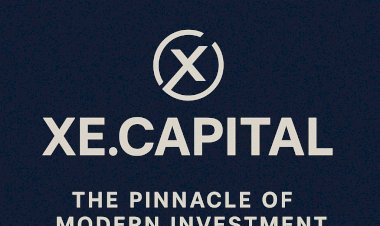Crypto Law 2025: The Year Governments Finally Defined Digital Assets

By Dr. Pooyan Ghamari, Swiss Economist and Visionary
The blockchain ledger doesn't lie, but regulators have spent years fumbling in the fog. Enter 2025: the year the world’s governments stopped treating digital assets like digital ghosts and started drawing borders around them. From Washington’s "hard fork" to Brussels’ ironclad MiCA, this wasn't evolution—it was a revolution. What began as scattered enforcement actions morphed into a global tapestry of laws, defining everything from Bitcoin's commodity status to stablecoins' reserve mandates. The result? A market that surged past $3 trillion, not despite the rules, but because of them. Clarity isn't a chain; it's rocket fuel.
The Atlantic Awakening: America's "Genius" Pivot to Crypto Clarity
Picture the scene: January 20, 2025. A new administration sweeps in, and Treasury Secretary Scott Bessent declares an "America’s Hard Fork on digital assets." Gone was the SEC's enforcement hammer under Gary Gensler; in strode Paul Atkins as chair, flanked by CFTC's Brian Quintenz. The pivot was seismic.
The crown jewel? The GENIUS Act—Guiding and Establishing National Innovation for U.S. Stablecoins—signed into law by July. This wasn't tinkering; it was the first federal blueprint for stablecoins, mandating full-reserve backing, anti-money laundering teeth, and the tech to freeze illicit flows. Issuers now face Treasury oversight, with sanctions evasion off the table. Stablecoin market cap? It doubled to $250 billion by fall, as banks like JPMorgan piled in with tokenized deposits.
But GENIUS was just the opener. The CLARITY Act followed, carving up jurisdiction: CFTC owns "digital commodities" like Bitcoin (spot markets included), while SEC keeps securities. Digital commodity exchanges must register, segregate client funds, and insure against hacks. No more gray zones—crypto's now a regulated asset class, with ETFs flowing like fine wine. Critics cried overreach, but investors cheered: institutional inflows hit $1 trillion, turning Wall Street's skeptics into allocators.
Fortress Europe: MiCA's Iron Grip on the Continent's Crypto Frontier
While America forked ahead, the EU built a fortress. MiCA—Markets in Crypto-Assets Regulation—went fully live on December 30, 2024, but 2025 was its proving ground. By mid-year, over 400 licenses were issued, with the Netherlands and Malta leading the charge. Crypto-Asset Service Providers (CASPs) faced the gauntlet: capital buffers, whitepaper audits, and a central ESMA register exposing non-compliants.
Stablecoins got the royal treatment. Asset-Referenced Tokens (ARTs) and E-Money Tokens (EMTs) demand 100% liquid reserves, daily transparency reports, and redemption rights. The EBA's stress tests weeded out the weak; only the fortified survived. DeFi? It's next—guidelines on lending and staking dropped in July, mandating KYC for interfaces touching fiat.
The impact? A 28% compliance cost spike for mid-sized firms, but a flood of TradFi players. BlackRock tokenized €10 billion in bonds by Q3, and the RWA market ballooned 150%. MiCA didn't stifle innovation; it sanctified it, turning Europe into the compliant crypto Eldorado. Yet, whispers from Luxembourg hint at green bonds integration, blending crypto with ESG for the next bull leg.
London's Ledger: The UK's Phased Play for Global Crypto Crown
Across the Channel, the UK opted for elegance over edict. The Financial Services and Markets Act 2000 (Regulated Activities and Miscellaneous Provisions) (Cryptoassets) Order 2025 dropped in April, folding crypto into the FCA's perimeter without MiCA's drama. Stablecoin issuance? Regulated from day one, with custody rules mandating segregated wallets and insurance.
The FCA's roadmap was a masterstroke: Discussion Paper DP25/1 in May probed trading platforms, staking, and DeFi, while consultations on prudential regimes followed. By Q2, intermediaries handling retail trades needed FCA nods, but only for assets listed on authorized platforms—a clever nudge toward liquidity hubs. Overseas platforms serving Brits? Now under the microscope, closing arbitrage loopholes.
Results poured in: Crypto ownership hit 12% of adults, up from 4% in 2021. Scams plummeted 40% as bad actors bolted. The Chancellor's US alignment via the Financial Regulatory Working Group sealed it—London's eyeing Dubai's throne, with tokenized gilts on the horizon for 2026.
Asia's Archipelago of Ambition: Hubs Rising from Regulatory Reefs
Asia didn't march in lockstep; it sprinted in shards. Singapore tightened its PSA framework, extending licenses to overseas-serving firms via the FSMA amendments. MAS's stablecoin code demands high-quality reserves and interoperability pilots, drawing $5 billion in VC by summer. Retail ads? Curbed, but innovation thrives—Coinhako's in-principle approval sparked a licensing rush.
Hong Kong doubled down as the East's gateway. The SFC's VATP licenses hit 10 by March, with staking rules mandating licensed-only services. No capital gains tax, 16.5% corporate rates, and the HKMA's Fintech 2025 Strategy (blockchain for cross-border settlements) lured ASEAN flows. Vietnam's 30-40% adoption? Hong Kong's eyeing it like a dragon its hoard.
Japan played the long game. The FSA loosened token listings, restricting stablecoin issuance to banks and trusts. VAUPA's July enforcement segregated client assets and boosted AML, with eight full licenses issued. DeFi sandboxes tested the waters, while yen-backed tokens hinted at CBDC hybrids.
The Global Glue: FATF's Travel Rule and Tokenization's Tidal Wave
Zoom out, and 2025's true triumph was cohesion. FATF's June report: 99 jurisdictions adopted the Travel Rule, chaining VASPs with sender-receiver data. Tokenization exploded—RWAs grew 200%, from bonds to Bordeaux—under unified standards.
Yet challenges loomed. US-EU divergences on DeFi oversight sparked Davos debates. Trump's Anti-CBDC Act vetoed a digital dollar, betting on private stablecoins. Asia's patchwork? It's converging, with ASEAN pilots syncing Singapore and Hong Kong.
Dawn of the Defined Era: Investors' New North Star
2025 wasn't the end of crypto's wild west—it was the mapping of its metropolises. Definitions brought dollars: compliance costs rose, but so did confidence. Governments didn't tame the beast; they saddled it, riding toward a $5 trillion horizon.
For the visionary investor, this is your cue. Audit your portfolio against MiCA's reserves, CLARITY's classifications, and MAS's mandates. The future isn't decentralized chaos—it's defined opportunity. Bet on the compliant; the rest is noise.
Dr. Pooyan Ghamari is a Swiss economist and visionary dissecting the intersections of regulation, innovation, and global capital flows. In 2025, he advised three sovereign funds on MiCA-compliant strategies—and slept better for it.

 content-team
content-team 


















